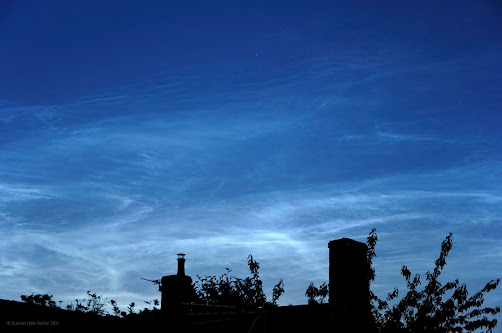Last night (the 20th April) we had a decent clear night and, for the first part of it, the moon was out of the way (it was 4 days past full), so I was determined to see if I could get a magnitude estimate for the variable star Z Ursae Majoris (Z UMa). I have described the approach to this in my previous post. I went out before the end of astronomical twilight (it ended at about 21.20 UT) to get set up and to orientate myself again about the location of this star in Ursa Major. I was using my Opticron 8x24 binoculars again and this time, because the sky was so much darker, I could make out Z UMa and the comparison stars around it. I should, perhaps, have determined what the limiting magnitude was by checking that I could see stars marked as L (magnitude 8.9) and M (magnitude 9.5) but I defintely could make out the small triangle of stars that included H (magnitude 8.7). So the limiting magnitude was fainter than 8.7.
I found that comparing Z UMa with the other stars quite difficult. You have to keep looking at the chart to fix in your minds eye which star is which and then determine which two stars are closest in brightness. I think that my task could be made easier if I invested in some 7x50 binoculars, as the 4 times greater light gathering power would help to brighten up the target and comparison stars (but then they would be heavier). In the end at UT 20:57 I decided that Z UMa was the same brightness as star C which put it at magnitude 7.5. I thought I would try to see if this was in agreement with what other people are recording. If you go to the American Association of Variable Star Observers' website you can plot out the latest estimates of the visual magnitude for this star. Just put in Z UMa into their 'Pick a star' box and 'Plot a light curve'. The Julian Date for the 20th April 2022 at 20:57 is 2459690.37292. You can see that my estimate seems to be spot on (click on any of the black open circle data points around this date and you will see estimates around this value).
On the same chart there is another semi-regular variable star - RY Ursa Majoris (RY UMa) and I decided to try and get an estimate for the magnitude of this star too. There are four comparison stars labelled 1, 2, 4 and 5. I was able to find this star ok and at UT 21:11 I decided that this star was equal in brightness to the star labelled 2 which put it at magnitude 7.4. Again you can look at the AAVSO website for this star and plot a light curve. Using the Julian Date given above this estimate seems to agree well with other observers.
All text and images © Duncan Hale-Sutton 2022








